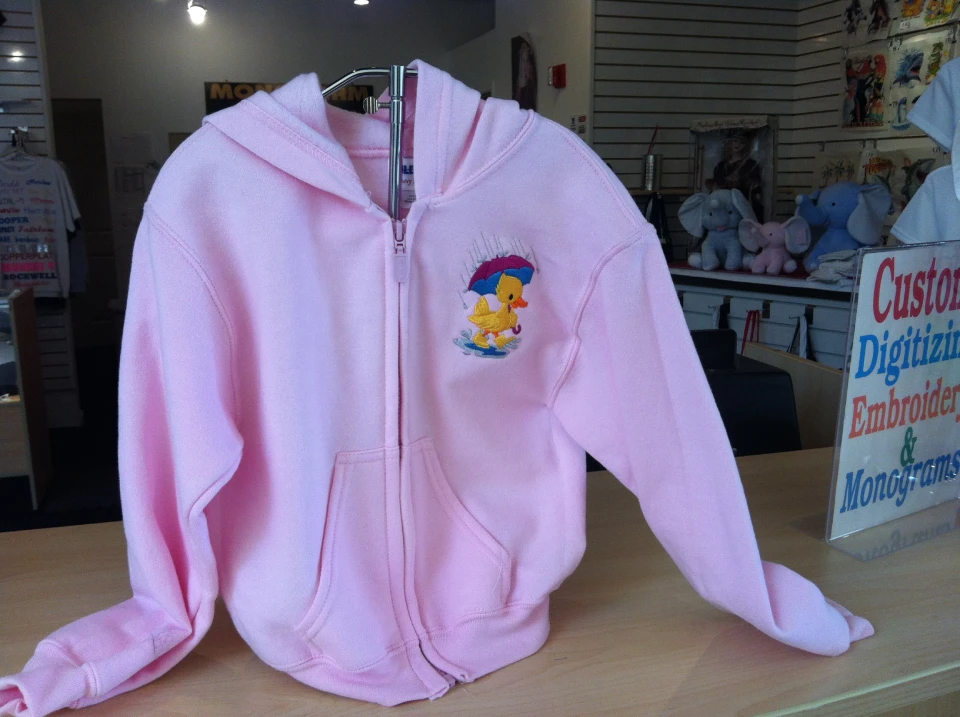Personalized School Uniforms with High-Quality Embroidery Providers
Personalized School Uniforms with High-Quality Embroidery Providers
Blog Article
The Art of Customized Needlework: Unlocking the Keys to Creating Unique and Memorable Styles
Embroidery, a craft steeped in practice and virtuosity, holds within its intricate stitches the power to transform textile right into a canvas of special expression. The secrets to producing customized needlework designs that astound the eye and leave an enduring perception lie in a fragile balance of strategy, imagination, and focus to information. As we dig right into the world of custom-made embroidery, we reveal the nuanced interplay between string choice, sew complexity, and layout customization that boosts a plain garment to a masterpiece. Join us on a trip via the art of customized needlework as we untangle the enigmas behind crafting truly remarkable and unique creations.
Selecting the Right Embroidery Threads
When selecting embroidery strings, what essential elements should you consider to make certain the very best results for your personalized layouts? The choice of needlework string is essential in figuring out the last outcome of your embroidered layout. Among the primary considerations is the material of the thread. Different materials such as cotton, polyester, rayon, and silk provide differing degrees of luster, sturdiness, and texture. It is vital to select a thread material that enhances the material you are embroidering on and lines up with the preferred look of the style.
Thicker strings can include measurement and texture to your layout, while finer threads are suitable for elaborate details and tiny text. Additionally, taking into consideration the color fastness and washability of the string is essential to make sure that your customized layouts maintain their quality and vibrancy over time.
Checking Out Different Stitch Strategies
To explore the realm of 'Checking out Different Stitch Strategies', one have to realize the ins and outs and subtleties that each sewing approach gives the art of needlework. Different stitch strategies not only add aesthetic passion yet likewise add to the overall structure and measurement of the style. One preferred stitch technique is the satin stitch, which entails carefully packed parallel stitches to create a smooth and shiny surface, suitable for filling in shapes and producing bold describes.
On the other hand, the backstitch is a functional technique usually made use of for describing and adding great details. It involves sewing in reverse to create a solid line of embroidery. Additionally, the French knot stitch includes a tactile component to styles, perfect for developing distinctive accents like blossom centers or decorative touches.
Discovering various stitch techniques allows embroiderers to play with light, shadow, and depth within their styles, elevating the visual charm and artistic high quality of their needlework tasks. By understanding various stitching approaches, one can open countless possibilities for creating one-of-a-kind and remarkable personalized needlework pieces.
Incorporating Personalized Design Elements
Having discovered the ins and outs of various stitch strategies such as the satin stitch, backstitch, and French knot, the focus now shifts in the direction of integrating tailored design aspects in personalized needlework jobs. Customized style aspects play a crucial duty in making needlework jobs really one-of-a-kind and memorable.
An additional way to incorporate personalized my blog style elements is by including signs or themes that hold unique significance to the recipient or show their passions and character. Including a preferred blossom, animal, or hobby-related sign can make the embroidery layout much more significant and individualized. Furthermore, choosing shades that resonate with the recipient or straighten with the intended theme can better improve the customization of the embroidery task.
Grasping the Art of Shade Control

One trick facet of color control is understanding color theory. This consists of recognizing just how various colors connect with each other, the emotions they convey, and exactly how they can be incorporated to develop visually enticing layouts. By using color theory principles, embroiderers can produce unified shade palettes here are the findings that boost the overall appearance of the layout.
In addition, paying attention to contrast is critical in shade sychronisation. Making use of contrasting shades can help certain elements of the design pop, enhance legibility, and create a visually dynamic needlework item. By grasping the art of shade control, embroiderers can raise their designs and produce remarkable pieces that reverberate with clients and audiences alike.
Enhancing Structure With Advanced Needlework Stitches
French knots, as an example, are ideal for adding small, elevated dots to your layout, mimicking the look of grains or creating a textured surface area. Bullion knots, on the various other hand, can be utilized to develop twisted, ropelike elements that include a lavish feel to the embroidery. Seed sewing includes little, scattered stitches that can fill out locations with a polychromatic appearance, while turkey job creates fluffy, dimensional accents similar to browse around this web-site pet fur or foliage. Trying out these innovative needlework stitches enables you to push the limits of standard embroidery and create absolutely unique and visually appealing textures in your designs.
Verdict
In final thought, the art of custom embroidery includes a combination of picking the right threads, checking out numerous stitch strategies, incorporating individualized style components, understanding color sychronisation, and boosting appearance with advanced stitches. By recognizing and implementing these crucial elements, embroiderers can develop one-of-a-kind and unforgettable layouts that display their creative thinking and skill. Embroidery fanatics can unlock the keys to developing gorgeous and bespoke items that attract attention and leave a long lasting impression.
Report this page